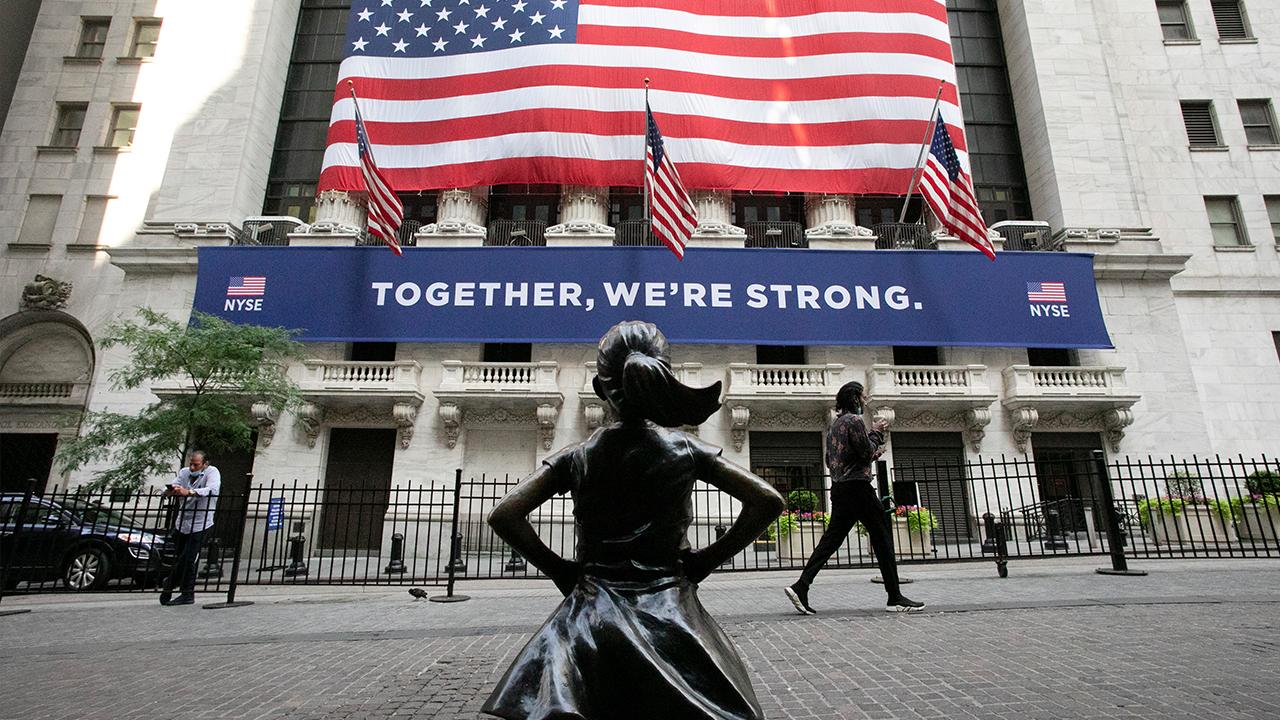MAGA stocks' coronavirus surge spurs dotcom bubble flashbacks
MAGA stocks account for 21% of the S&P 500
Mega-cap tech stocks are surging at a pace that has some investors drawing parallels with the dotcom bubble of 1999 and 2000.
The tech-heavy Nasdaq, led by MAGA stocks Microsoft, Amazon, Google and Apple, has soared 56 percent from its low on March 23 when stay-at-home orders meant to slow the spread of COVID-19 brought the economy to a near standstill and prompted unprecedented government stimulus measures. Its gain in 2020 to date is 51 percent.
“Money wants to flow to companies whose growth prospects are good whether the economy is good or bad,” Scott Wren, senior equity strategist at Wells Fargo Investment Institute, told FOX Business.
SILVER PRICES POISED TO OUTSHINE GOLD
The MAGA stocks currently make up about 21 percent of the S&P 500. They have seen their market capitalization grow by a combined $1.37 trillion this year through Thursday versus a decrease of $3.37 billion for the entire S&P 500, according to Dow Jones Market Data.
Add Facebook into the mix, and the five stocks command just less than 23 percent of the S&P 500. The last time five companies made up that big of a portion of the index was in 1964, according to Jim Bianco, president and macro strategist at Chicago-based Bianco Research, who was the first to make note of the acronym from President Trump's 2016 campaign.
“Typically, when companies get this big, they're not supposed to see these kinds of gains,” Bianco told Fox Business. He attributes them to the companies being “quintessential” stay-at-home stocks, the tendency of retail investors to buy what they use and understand, and the extraordinary stimulus put forth by both Congress and the Federal Reserve.
Bianco, who said there are “some similarities” to the tech bubble, believes investors have a chance to make a lot of money.
The key is determining whether the growth is similar to that of 1999, when there was a long runway before the dot-com bubble burst and the Nasdaq returned 85 percent, or closer to when the index put in its peak in early 2000.
“When you see a bubble, you run to invest in it because that's when you make a lot of money real fast,” Bianco said, citing a belief of legendary investor George Soros.
US DOLLAR TO WEAKEN AS CORONAVIRUS RECOVERY FORGES AHEAD
“Sure, it's hard to get out with it, but I'm not going to sit around and watch companies double in three or four months,” he added. “I'm going to take my chances that I can get in and make a lot of money and get out with a decent profit.”
For Bianco, the signal that the market’s surge is ending will come from the Treasury market. He noted that the 10-year yield has traded within a handful of basis points above or below 0.62 percent for four months, making for the tightest range in 25 years.
When the bond market breaks either way, the “game is over” for stocks, he said, noting that would signal either a weak economy or the Fed’s stimulus leading to inflation.
| Ticker | Security | Last | Change | Change % |
|---|---|---|---|---|
| MSFT | MICROSOFT CORP. | 387.30 | +12.91 | +3.45% |
| AMZN | AMAZON.COM INC. | 186.54 | +5.94 | +3.29% |
| GOOGL | ALPHABET INC. | 159.28 | +3.93 | +2.53% |
| AAPL | APPLE INC. | 208.37 | +3.77 | +1.84% |
Wren, who does not see a “tech bubble” amid the central bank's mammoth stimulus, points to S&P 500 earnings yielding 4.48 percent compared with the 10-year Treasury note’s 0.6 percent and the index’s earnings estimates for next year as evidence.
The S&P 500 is currently trading at about 22.7 times estimates for its members' next 12 months of earnings per share, which is a touch above the 30-year average.
Estimates in March 2000 were at 32 times earnings, he said.
Meanwhile, David Rosenberg, chief economist and strategist at Toronto-based Rosenberg Research, said the MAGA stocks have “utility-like characteristics,” making this time different from the tech bubble.
Back in 1999-2000, there was a “wild, speculative binge” in companies that had no business model and no earnings, he said. This time, they are “real companies with earnings.”
Still, Rosenberg wouldn't be a buyer at what he called “nosebleed” valuations. Instead, he plans to wait for prices to come back down and for stocks to successfully test their 200-day moving averages before starting to “put some toes” back in the pool.
CLICK HERE TO READ MORE ON FOX BUSINESS
“A great company at any given moment in time does not necessarily equate to a great stock,” he warned

